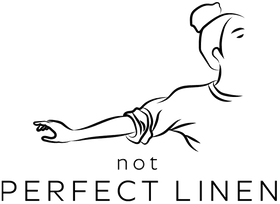Linen fabric is a truly remarkable material that has been cherished for centuries for its many properties and benefits. Linen properties such as durability, breathability, and moisture-wicking capabilities make it a versatile fabric for a variety of products, including clothing, bedding, and home decor. With a rich history dating back to ancient times, linen production has evolved to become a sustainable and eco-friendly process. Whether you're a fan of linen or new to this wonderful fabric, in this article, we will explore the fascinating world of linen fabric together, delving into its properties, history, and how is linen made.

Unique Linen Properties
- Strong and durable: Linen is a solid fabric that can withstand wear and tear over time.
- Breathable: One of the key benefits of linen is its breathability. It allows air to flow through the fabric, which makes it comfortable to wear in warm weather.
- Absorbent: Linen is highly absorbent, which means it can soak up moisture quickly. This is why linen towels are often preferred over other materials.
- Hypoallergenic: Linen is naturally hypoallergenic, which means it's less likely to cause allergic reactions or irritation.
- Environmentally friendly: Linen is an eco-friendly fabric as it's made from flax, a crop that needs less water and pesticides than cotton. Moreover, all parts of the flax plant are utilized in linen production, minimizing waste.
Where Does Linen Come From? A Quick Journey Through Its History
Linen has been used for thousands of years, with evidence of its use dating back to ancient Egypt. Linen was considered a luxury fabric in ancient times and was often used to wrap mummies.
During the Middle Ages, linen material production became an important industry in Europe, particularly in countries such as Belgium, Ireland, and the Netherlands. Linen was a luxury fabric that was often reserved for the wealthy because of linen properties and it was used to create a variety of products, including clothing, bedding, and tablecloths.
During the Industrial Revolution, linen production became mechanized, which made it more affordable and accessible to the masses. Today, linen material is still produced in many parts of the world, with the highest quality linen typically coming from Belgium, Ireland, and France.

What is Linen Made Of? A Closer Look at the Natural Fiber
Linen is made from the fibers of the flax plant, which is grown in many parts of the world, including Europe, Asia, and North America. Flax plants are typically harvested by hand, and the fibers are then separated from the rest of the plant then spun into thread, which can be woven into linen fabric - and here you have quality linen. Because linen is made from a natural fiber, it is biodegradable and can be composted at the end of its life.
What Does Linen Mean? Exploring the Symbolism of the Fabric
Linen symbolizes purity, royalty, comfort, timelessness, sustainability, elegance, and simplicity. In some cultures (e.g., in Christian ones), linen is used in religious ceremonies and is considered a symbol of purity and divinity.
In addition, linen is often associated with luxury and sophistication, particularly when it comes to home decor. Linen napkins and tablecloths, for example, are often used for formal occasions and are seen as a sign of elegance and refinement.

How is linen made and what makes it expensive?
The process of making linen involves several steps:
- Growing and Harvesting: Flax is planted in the spring and harvested when it begins to turn yellow and the fibers are at their strongest.
- Retting and breaking: The flax stems are soaked in water for several days to loosen the fibers from the woody stalks. The stalks are then broken to separate the fibers from the rest of the plant.
- Scutching and hackling: The fibers are scutched to remove any remaining woody bits. Then they are hackled to remove any remaining impurities and to straighten them.
- Spinning: The fibers are then spun into yarn or thread.
- Weaving: The yarn or thread is woven into linen fabric.
- Bleaching: The linen fabric is then bleached to make it white.
- Finishing: The finished linen is then cut and sewn into various garments or household items.
This whole process often takes quite a lot of time and requires human and financial resources. In addition, because linen is made from a natural fiber, it can be more prone to wrinkles and requires special care when laundering. That is why linen tends to be a bit more pricey compared to other materials - quality costs money.
Linen or Lineum? How Do You Spell the Word?
The correct spelling of the word is linen, which comes from the Latin word "Linum", meaning flax. However, it is not uncommon to see the word spelled as "Lineum", particularly in scientific contexts.
Is Linen a Natural Fiber?
Absolutely yes. Linen is a natural fiber that is biodegradable and compostable, making it a more eco-friendly choice than synthetic materials such as polyester. In addition, because flax plants require less water and pesticides than other crops, linen production can be more sustainable than other types of textile production.
However, it is important to note that not all linen is created equal when it comes to sustainability. For example, linen that is grown and produced locally may have a smaller carbon footprint than linen that is produced overseas and shipped around the world.
Final Thoughts
In conclusion, the world of linen fabric is truly fascinating. From its unique properties to its rich history and intricate process of how linen is made, there is so much to learn about linen material. Whether you're a fashion enthusiast or just appreciate quality textiles, exploring the world of linen is definitely worth your while.


